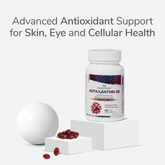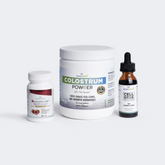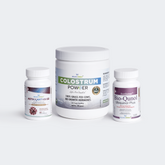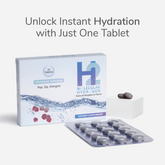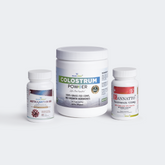Estimated Reading Time: 8 minutes
|Has this happened to you that after seeing a red, itchy, or irritated eye, you might have thought, “Oh, it's just pink eye” It's a common assumption for everyone. However, here's the thing you must know; not every red eye is pink eye. In fact, many different conditions can mimic the pink eye (also known as conjunctivitis) So, it's essential to get the right diagnosis for proper treatment and faster relief.
In this blog, we'll explore some of the most common conditions that people, and even some doctors, can misdiagnose as pink or red eye. Knowing these can help you better understand your symptoms and know when to seek medical advice. Let's get started!
What is the Pink Eye Anyway?
Before we get into the lookalikes, let's quickly talk about what pink eye really is. Pink eye, or conjunctivitis, is inflammation or infection of the conjunctiva, which is the thin, clear mucous membrane (tissue) covering the white part of your eye and the inside of your eyelids. Viral pink eye often starts with one eye and may spread to the other with a watery discharge and may be accompanied by cold or flu symptoms.
This inflammation can be triggered by a variety of causes, including viral or bacterial infections, allergens like pollen or pet dander, or even irritants such as smoke or chemicals. Because pink eye symptoms can look very similar to those of other eye problems, it is one of the most commonly misdiagnosed eye conditions.
What are the Pink Eye Symptoms?
Pink eye symptoms can vary depending on what’s causing the inflammation, but there are some common signs to watch for. Most people experience eye redness, itchiness, and a gritty or watery feeling in one or both eyes.
Some common pink eye symptoms usually include:
-
Redness in one or both eyes
-
Itching or burning sensation
-
Watery or thick discharge
-
Pus-like yellow or green discharge that causes eyelids to stick together
-
Crusting on the eyelids, especially after sleep
-
Swelling in eyelids
-
Mild pain
-
Runny nose (especially with allergic pink eye, often alongside sneezing and watery eyes)
Pink eye can be caused by viruses, bacteria, allergens, or irritants, and its treatment depends on the cause. Usually, viral pink eye clears on its own, bacterial might require antibiotics, and allergic pink eye needs allergy meds or avoiding triggers.
Also Read: Antioxidant For Tired Eyes
What is Commonly Misdiagnosed as Pink Eye [10 Conditions]
Pink or red eye is common and looks in a way that many red-eye issues get mistaken as conjunctivitis quickly.
But some other eye problems have similar symptoms and require different treatments. If you treat the wrong condition as pink or red eye, symptoms can worsen, or complications might occur. If symptoms persist despite initial treatment, it is important to consult an eye doctor for further evaluation.
Here's a list of common conditions that you may often call a pink eye:
1. Blepharitis
Blepharitis is inflammation of the eyelid edges. It causes redness, itching, and flaky skin around the lashes, which can look a lot like pink eye. But unlike bacterial conjunctivitis, blepharitis often comes with swelling of the eyelid, eye discharge and crusting or oily flakes on your eyelids, which helps distinguish it from bacterial conjunctivitis. Blepharitis may affect both eyes chronically.
Treatment: Warm compresses and gentle eyelid cleaning can help you. Antibiotics may be needed for bacterial blepharitis.
2. Dry Eye Syndrome
Dry eyes occur when your eyes don't produce enough tears, or the tears evaporate too fast. This can cause redness, irritation, and a gritty feeling. Its symptoms mimic pink eye; however, dry eye is chronic while pink eye is an acute (short-term) condition.
Treatment: Artificial tears, lifestyle changes like reducing screen time, and sometimes prescription eye drops can work.
3. Corneal Abrasion
A scratch or injury on the cornea (the clear front part of your eye) causes mild to severe pain, redness, tearing, and sensitivity to light. It usually happens when your eye comes in contact with foreign objects like sand. The redness can be mistaken for pink eye, but the pain and light sensitivity are usually more intense.
Treatment: Prompt medical care is crucial. Antibiotic drops, pain medications and sometimes patching help healing. In some cases, a pressure eye patch may be recommended to protect the eye and promote recovery.
Also Read: Natural Ways To Protect Eyes As You Age
4. Allergic Conjunctivitis
This is a version of pink eye but caused specifically by an allergic reaction to allergens like pollen, animal dander, or dust mites. Allergic reactions trigger symptoms such as redness, itching, and swelling in the eyes. It usually affects both eyes and comes with intense itching, swelling, and watery eyes. Unlike pink eye, allergies do not usually cause discharge.
Treatment: Antihistamine or anti-inflammatory eye drops, avoiding allergens, and sometimes oral allergy medicines.
5. Uveitis or Iritis
Uveitis, specifically anterior uveitis (also known as iritis), is inflammation of the iris, which is part of the middle layer of the eye, called the uvea. It is usually caused by infections, autoimmune diseases, and certain types of cancer. Symptoms include redness, eye pain, blurred vision, floaters, and light sensitivity. It can look like pink eye, but it is more serious and requires immediate medical attention.
Treatment: You may need steroid eye drops and treatment for underlying causes. Untreated uveitis can lead to loss of vision.
6. Subconjunctival Hemorrhage
This condition looks scary, but it is usually harmless. A small blood vessel breaks just beneath the conjunctiva, causing a bright red patch on the white part of the eye. It looks like a burst blood vessel, not the usual pink eye redness, and usually doesn't cause pain, irritation, or discharge as pink eye does.
Treatment: Typically, no treatment is needed to fix this, just time.
7. Hordeolum (Stye)
A stye is a small bump on the edge of the eyelid along the eyelashes. It can cause redness, irritation in the eye, and can be painful and at times accompanied by swelling. In some cases, styes can lead to widespread eyelid swelling, which may require medical evaluation. It resembles a pimple and is caused when an oil gland near eyelashes gets blocked or infected.
Treatment: Apply a warm compress to the affected area. In case the situation worsens, contact your doctor.
8. Contact Lens-Related Problems
Wearing contact lenses improperly or for longer durations can cause irritation, redness, and infection that may look like pink eye. Sometimes, the cause is poor hygiene, overwearing, or damage to the lens. Digital eye strain from prolonged screen use can also worsen symptoms for contact lens wearers.
Treatment: Removing lenses, proper cleaning, and sometimes antibiotics if infection develops. For those with chronic dryness, tear duct plugs may be considered to help retain moisture.
9. Keratitis
It is caused by inflammation of the cornea often due to a bacterial infection. As symptoms, such as discharge and inflammation, are common, keratitis is often misdiagnosed as bacterial pink eye (bacterial conjunctivitis). But keratitis is typically more painful than pink eye.
Treatment: Oral antibiotics or antibiotic eye drops can help treat this bacterial infection, but it is important to consult your doctor.
10. Glaucoma
It's a degenerative disease that is caused by damage to the optic nerve behind your eye. Usually, there are no early symptoms for this condition, and advanced stages may even cause vision-related issues.
Treatment: Regular eye checkups for early detection. If detected, religiously follow your medical practitioner's advice, which may include eye drops or surgical treatments.
|
Condition |
Key Symptoms |
Treatment |
|
Blepharitis |
|
Warm compresses, eyelid cleaning, antibiotics if bacterial |
|
Dry Eye Syndrome |
|
Artificial tears, reduce screen time, prescription drops |
|
Corneal Abrasion |
|
Medical care, antibiotic drops, pain relief, patching |
|
Allergic Conjunctivitis |
|
Antihistamine/anti-inflammatory drops, avoid allergens |
|
Uveitis/Iritis |
|
Steroid drops, treat underlying cause, urgent care |
|
Subconjunctival Hemorrhage |
|
Usually no treatment, resolves on its own |
|
Hordeolum (Stye) |
|
Warm compresses, see doctor if it worsens |
|
Contact Lens Issues |
|
Remove lenses, clean properly, antibiotics if infected |
|
Keratitis |
|
Antibiotic drops/oral meds, doctor consultation |
|
Glaucoma |
|
Regular checkups, eye drops, possible surgery |
Also Read: 8 Ways To Slow Down Aging Eyes
When to See a Doctor:
-
Severe pain or discomfort
-
Changes in vision (blurriness, halos, vision loss)
-
Sensitivity to light
-
Thick, colored discharge
-
Eye trauma or injury
How to Prevent Misdiagnosis:
-
Be specific about your symptoms (e.g., pain, vision changes, allergies).
-
Follow up if symptoms don’t improve with initial treatment.
-
Avoid self-medicating unless recommended by a professional.
Closing Thoughts
While pink eye is common and often harmless, other eye conditions can look similar and often misdiagnosed as pink eye. but need very different care. By understanding the conditions and knowing what else could be causing your red, irritated eye, you can make smarter decisions about your eye health.
If in doubt, see an eye specialist (ophthalmologist or optometrist) for a proper diagnosis. Your eyes are too important to take chances!
Disclaimer: This blog is for informational purposes only and does not provide medical advice. Always consult a healthcare professional before making changes to your diet or health routine. Individual results may vary.
Frequently Asked Answers
Q1: What are the warning signs of pink eye?
Red or pink eyes, itching, burning, watery or sticky discharge, and swollen eyelids are common signs. If you have strong pain, sudden vision changes, or very bright light hurts your eyes, see a doctor right away.
Q2: Is pink eye common in children?
Yes. Kids often get pink eye, especially in schools or daycares where it spreads quickly.
Q3: Can pink eye cause headache?
Pink eye itself doesn’t usually cause headaches. But if it comes with a cold or flu, you might also have a headache.
Q4: Can pink eye cause fatigue?
Pink eyes alone don’t make you tired. If it’s from a virus, you might feel run down or fatigued along with other symptoms.
References:
-
American Academy of Ophthalmology. “When Pink Eye Is Something Else.” AAO Eye Health, Dec. 3, 2024, https://www.aao.org/eye-health/tips-prevention/when-pink-eye-is-something-else-conjunctivitis
-
Mayo Clinic. “Pink Eye (Conjunctivitis): Symptoms & Causes.” Mayo Clinic, Jan. 10, 2025, https://www.mayoclinic.org/diseases-conditions/pink-eye/symptoms-causes/syc-20376355
-
Azari, A. A., & Barney, N. P. “Conjunctivitis: A Systematic Review.” PMC, 2020, https://pmc.ncbi.nlm.nih.gov/articles/PMC7431717/
-
Solano, Daniel, Lanxing Fu, and Craig N. Czyz. “Viral Conjunctivitis.” StatPearls, StatPearls Publishing, updated 28 Aug. 2023, NCBI Bookshelf, https://www.ncbi.nlm.nih.gov/books/NBK470271/
-
KidsHealth. “Conjunctivitis (Pink Eye) — Parents.” Nemours, n.d., https://kidshealth.org/en/parents/conjunctivitis.html





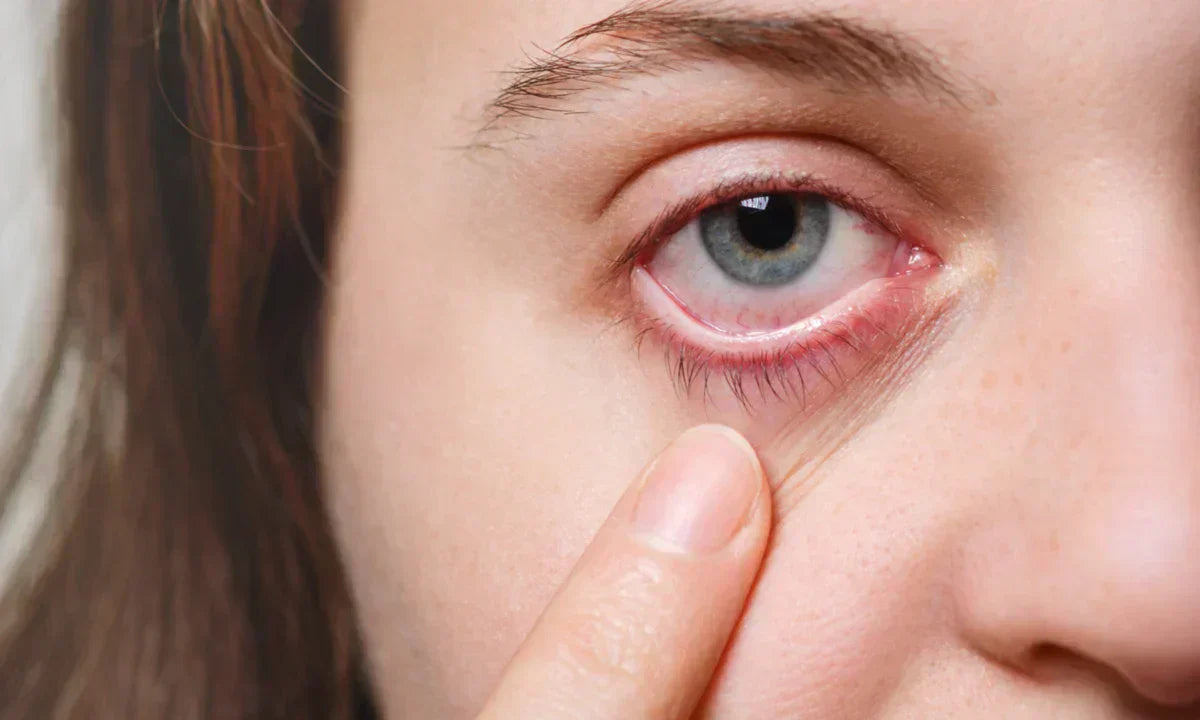








![Why Am I So Tired? The Science Behind Fatigue During Perimenopause [And What Actually Helps]](http://wellnessextract.com/cdn/shop/articles/fatigue_during_perimenopause_ec4b6073-aabe-4e69-bb43-59fc96146afb_165x.webp?v=1763527391)



